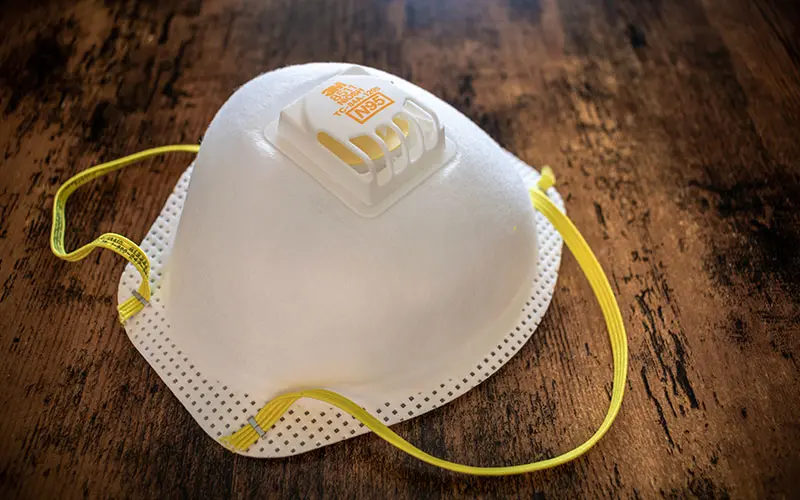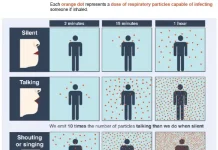Rich Simons, Ph.D., head of application science, AquiSense Technologies
Halfway through quarter two of 2020, no industry has been spared from the impact of COVID-19. Mass disruption of supply chains have cascaded through project timelines, disrupted work patterns, hampered team coordination, restricted physical mobility and limited core production capabilities. Of course, for all the economic disruption, the humanitarian cost has been far the greater. The pandemic represents the greatest public health challenge faced in a generation. As a result, there has been a great willingness to help lessen the damage.
COVID-19 Task Force
In response to this challenge the IUVA EOC approved the formation of the IUVA COVID-19 Task Force; coordinated by Dr. Ted Mao with the support of Ziqi Wu and with a diverse membership spanning UV industry, academic and medical practitioners. The task force aims to aggregate the best knowledge of UV disinfection and the many ways it may be applied in response to COVID-19. The IUVA believes that UV disinfection has a place in the fight against COVID-19 and that, as an advocacy group, it has a responsibility to promote safe and appropriate application of this technology.
Weekly Zoom meetings of the COVID-19 Task Force have proved an excellent opportunity to share progress of subgroups and for general discussion about the perspectives of UV disinfection in the COVID era. A common resource, Dropbox, also has been set up so members can share information in confidence, allowing more rapid progress of knowledge in the area.
Three subgroups were identified by the task force, each focusing on a key action area:
Subgroup 1: Dose response of SARS-CoV-2
The UV disinfection industry relies on a mature scientific base to give assurance of its efficacy against a range of pathogens. Most critical for system design is the UV dose (fluence) response curve, which describes the UV exposure required for a given reduction of the target organism. As a novel coronavirus, many of the behaviors of SARS-CoV-2, including the UV dose response, are unknown. Ultraviolet irradiation is expected to be an effective tool in limiting transmission of COVID-19 in several ways. Better understanding of the susceptibility of SARS-CoV-2 to UV will lead to more effective and reliable interventions and increase confidence in their deployment.
Subgroup 1 focuses on reviewing available literature on comparable viruses and building collaborations for new works to study SARS-CoV-2.
Subgroup 2: N95 mask decontamination
Demand for personal protective equipment (PPE) has spiked globally as healthcare workers tackling the pandemic require protection from the infected patients they are treating. It is expected that demand will outstrip supply of key PPE parts, leading to shortages. Though most are designed to be disposable, one method of tackling the shortfall in supply may be decontamination of PPE for safe reuse.
Several technologies are under investigation for PPE decontamination with a focus on filtering facepiece respirators (FFRs), commonly referred to by the National Institute for Occupational Safety and Health (NIOSH) classification “N95.” Decontamination of FFRs is a complex process, which must consider the structure and composition of the mask beyond the requirements of conventional surface disinfection.
Subgroup 2 focuses on defining the key questions for the implementation of this technology, tracking the rapidly evolving literature and providing a space to share best practices and developments.
Subgroup 3: Surface disinfection validation
Early in the outbreak, public health authorities identified transmission of the virus from contaminated surfaces as a key consideration; the subsequent advice was for regular hand washing and avoidance of touching the face. Ultraviolet radiation has long been used for surface disinfection, and the IUVA has a standing task force on its use to limit healthcare associated infections. UV clearly has potential, in addition to regular cleaning and hygiene activities, in limiting the spread of COVID-19 within hospitals and clinics, among other areas.
Subgroup 3 focuses on defining the requirements for surface disinfection by UV and protocols for validating its proper application.
Public engagement
An emergent need is for the IUVA to act as a source of expert knowledge on the safe and appropriate application of UV disinfection technology. The aim being to provide an impartial and balanced review of the factual evidence available, to be a voice of reason and clarity so that decision-makers have the best possible information at hand.
In this vein, the IUVA website has been expanded to include a dedicated COVID-19 page where several resources, both general across UV and specific to the SARS-CoV-2 virus, are located. These resources – including a Fact Sheet and FAQ on COVID-19 – are under regular review to keep pace with developments of the field and discussion of ultraviolet technology in the wider public context. Following a step-change in public interest in UV disinfection technology, the group rapidly came together to draft, review and approve for distribution a press release on safety concerns of human exposure to UV. This press release was picked up by national (US) media outlets and contributed to the chorus of expert comment expounding the dangers, but also the opportunities, of ultraviolet technology. Efforts like this simultaneously satisfy the objectives of promoting the application of UV technology while raising awareness of the need for its safe handling.
Alongside joint efforts such as these, the working groups are generating specific outputs related to their areas, with several white papers planned, covering such critical areas as the expected inactivation kinetics of SARS-CoV-2 by UV irradiation.
IUVA Young Professionals
In support of all these efforts, the IUVA Young Professionals (YP) group has been invaluable to the smooth operation of the COVID-19 Task Force. From the very start, the YP network offered its assistance in organizing meetings, taking minutes and reporting actions, and disseminating information through social media and other channels. The new YP-led Wavelength podcast was launched, with the first episode focusing on the IUVA’s response to the challenges of COVID-19. The Young Professionals’ volunteered effort has greatly increased the potential of the task force.
All these efforts and collaborations show the strength of the IUVA membership and their willingness to use the technology to which they have dedicated their careers for the benefit of human health. Long may it continue.
Note: IUVA COVID-19 Task Force is open to IUVA’s members. Those interested in joining the task force please contact Mickey Fortune at IUVA ([email protected]).
Contact: [email protected]





